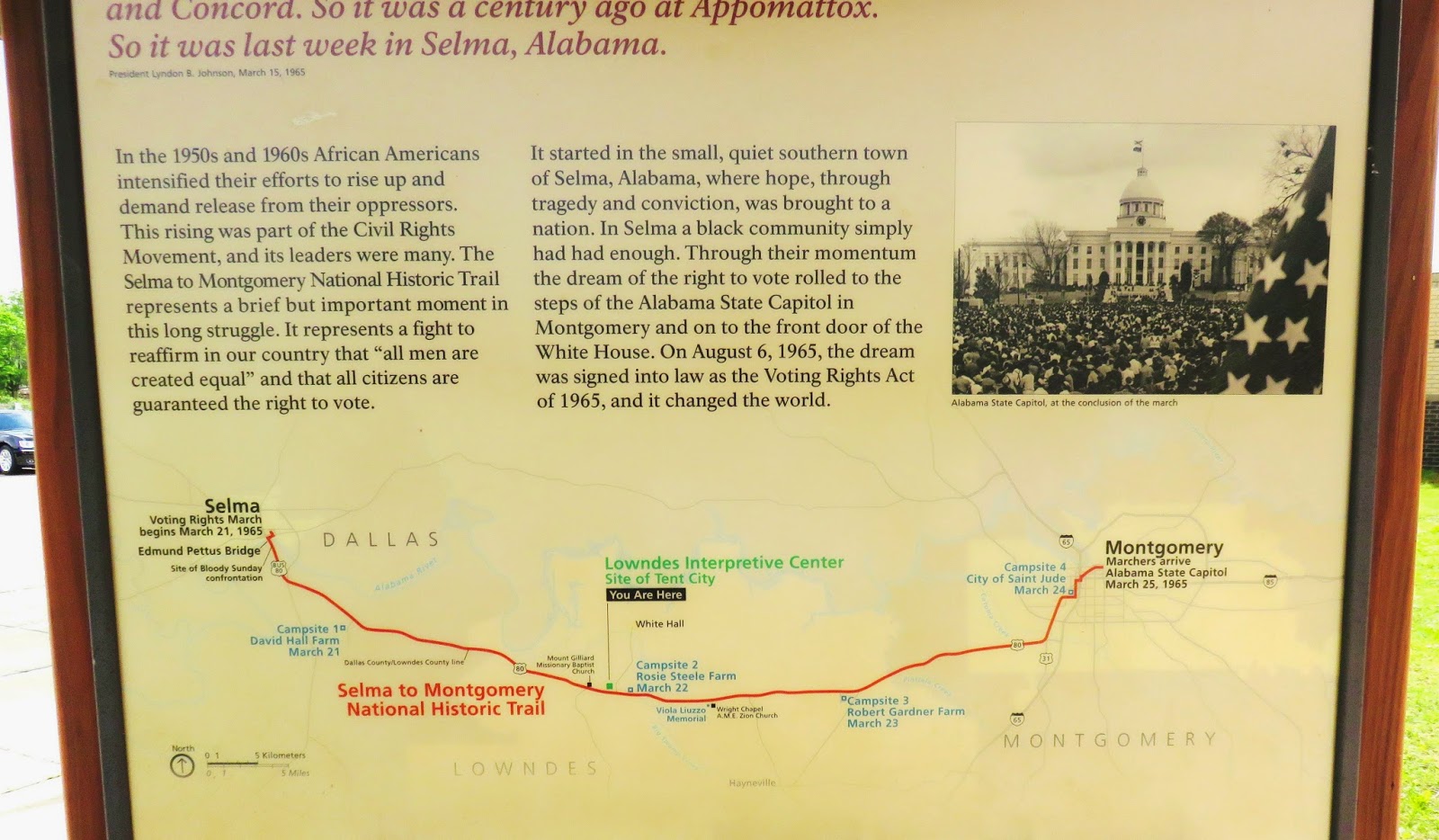The Natchez Trace Parkway, a federal park maintained by the National Park Service, has long been on our list of places to visit. Carving out the time to explore this National Scenic Byway worked into our plans to be in Alabama and Mississippi for our last two Capitol visits. Also known as the "Old Natchez Trace", or simply, the Trace, this historical path extends roughly 440 miles from Natchez, Mississippi to Nashville, Tennessee. It was created and used for centuries by Native Americans (including the Natchez Indians) and later by European and American explorers, traders, and emigrants in the late 18th and early 19th centuries. The developed Parkway follows the approximate path of the Old Trace, and parts of the original trail are still accessible to park visitors.
We started the first leg of our journey near
the northern terminus of the trail, in Hohenwald,
Tennessee. Our RV Park, Falls
Hollow, provided easy access to the Parkway, located just across the road from
one of the many entrances. The first day out we drove 40 miles north towards Nashville stopping at the
many points of interest along the way. We hiked to beautiful waterfalls,
sometimes through fields of colorful wildflowers. We were treated to stunning
views of hills and valleys (known as hollows, and pronounced "hollers",
in Tennessee).
We hiked through dense forests along creeks and over bridges. We heard
beautiful songbirds, the chirping of the frogs and were sometimes sharing our
space with the resident insect life. We also picked up some history lessons
along the way. If this is just the first 40 miles, we'll need more than a
couple of weeks to take it all in!
Here are some pictures from our first
journey on the Trace.






































































